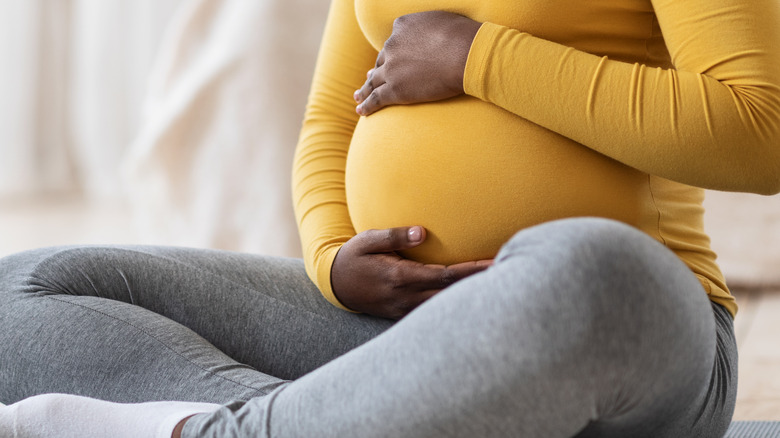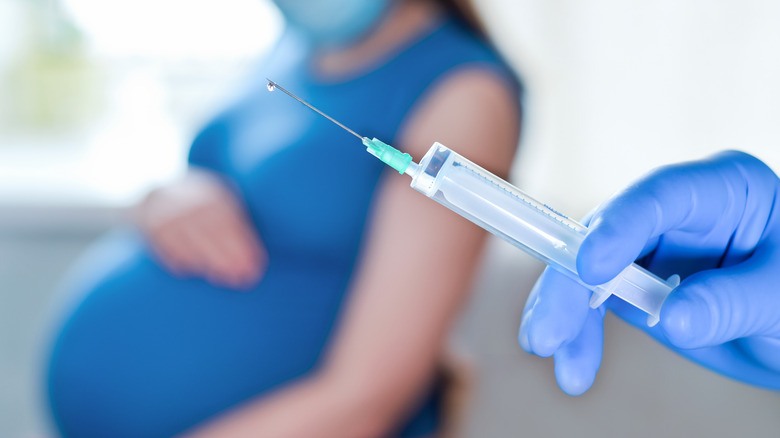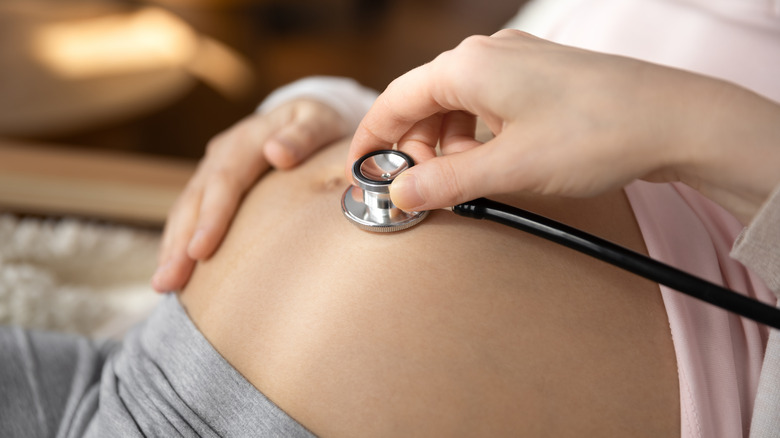The Real Risks You're Taking When You Have A Home Birth
According to a 2014 study published in the Journal of Midwifery & Women's Health, home births went up 41% between 2004-2010 in the United States. Even with such a big jump, only 1.18% of babies were born outside of a hospital. Of those births, about 66% were home births. The Mayo Clinic states that there are several reasons why women are choosing to give birth at home. Cultural or religious concerns, not having to worry about medical intervention, and a general desire to be as comfortable as possible are a few reasons.
Another big reason listed is dissatisfaction with hospital care — a concern Black, American Indian, and Alaska Native women understand all too well. In a 2019 press release, the Centers for Disease Control and Prevention (CDC) said that Black women are 2-3 times more likely to die from childbirth-related causes in comparison to white women. It stated that socio-economic factors do not play a role and that the issue "is a complex national problem."
While the government works toward reducing these disparities, mothers are taking control by relying on midwives at home instead of doctors in hospitals. Even though some studies suggest giving birth at home is just as safe as hospital births, per Science Daily, there are still risk factors that should be taken into consideration before fully committing to this decision.
Certain health conditions can make a home birth unsafe
Home birth safety is one of the reasons why mothers want to give birth at home. Ironically, it can also be one of the reasons why they shouldn't. Healthline notes that moms with issues such as preeclampsia or type 1 diabetes need to reconsider home birth. This is because the advanced care required — should anything go wrong — simply can't match that of a hospital.
Moms carrying multiples or who have previously given birth via cesarean (also known as a C-section) may also want to forego home birth due to the risky nature of the pregnancy.
Other medical reasons for choosing a hospital birth include high blood pressure, needing pain medications, the baby not being properly positioned, vaginal bleeding, meconium in the amniotic fluid, the baby displaying signs of distress during or after birth, placental abruption, umbilical cord prolapse, and incomplete placenta delivery.
Even with a home birth in motion, it's not uncommon for midwives to recommend going to the hospital once in labor due to these issues.
Mortality rate increases with home births
The chance of babies undergoing neurological damage, dysfunctions, or seizures is 3 times higher for home births in comparison to hospital births, according to WebMD. Furthermore, with a mortality rate of 1-2 out of 1,000, there is a greater risk of death. In fact, that rate is at least twice as high.
A 2020 study published in the American Journal of Obstetrics & Gynecology actually found that even with a midwife present, the mortality rate for home births far exceeded that of hospital births attended by midwives. The mortality rate for hospital births with a hospital-certified nurse-midwife was 3.27 per 10,000 live births. Home births with direct-entry midwives had a mortality rate of 12.44 per 10,000 live births. The report also showed that these numbers escalated for at-risk mothers. There was no significant difference in mortality rate pertaining to the type of midwife present during the home birth.
With that in mind, mothers can still have nurse-midwives present during hospital births. Not only can they be helpful before and during labor, but midwives can also serve mothers in terms of what they should and shouldn't do after giving birth.



